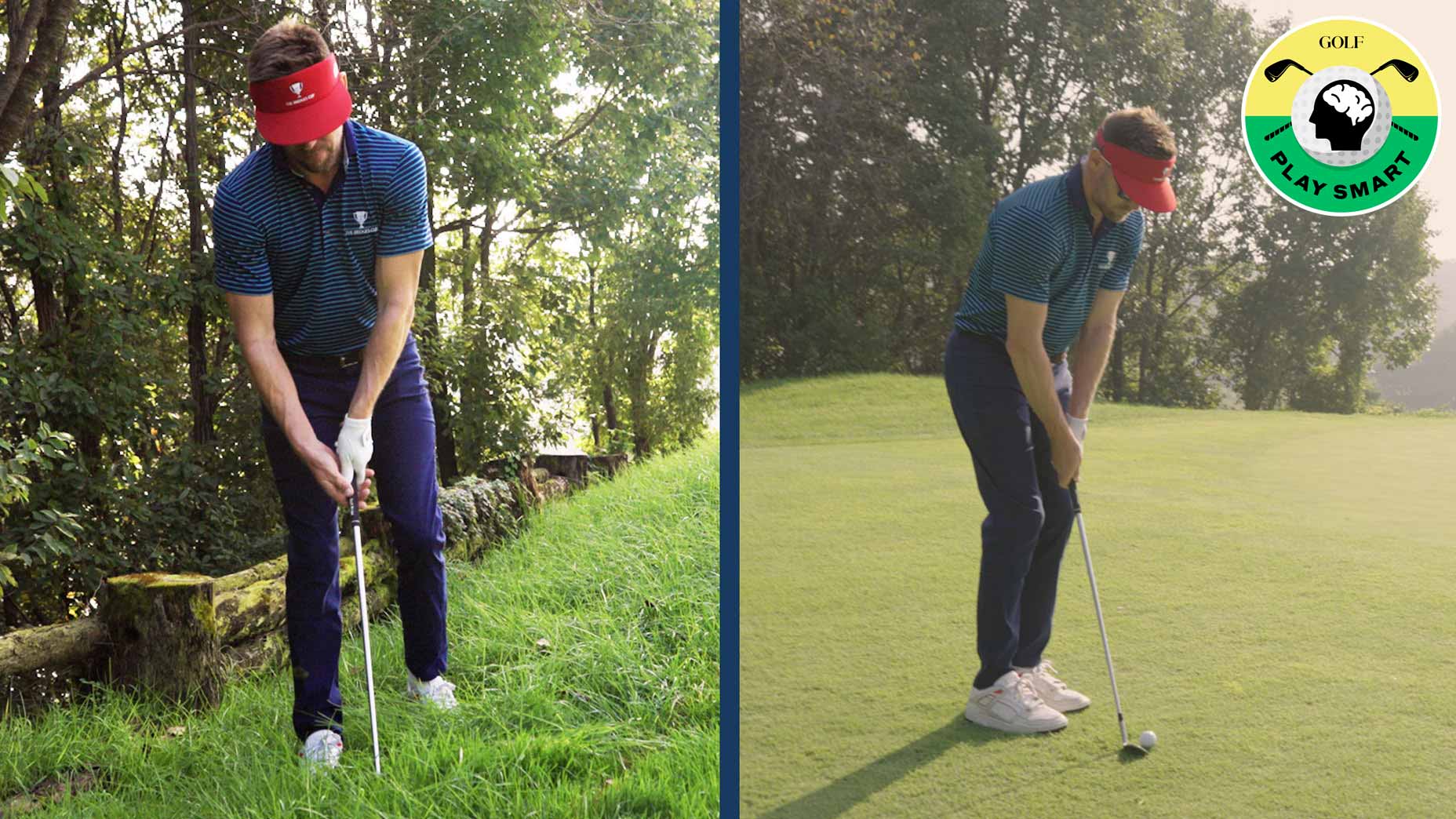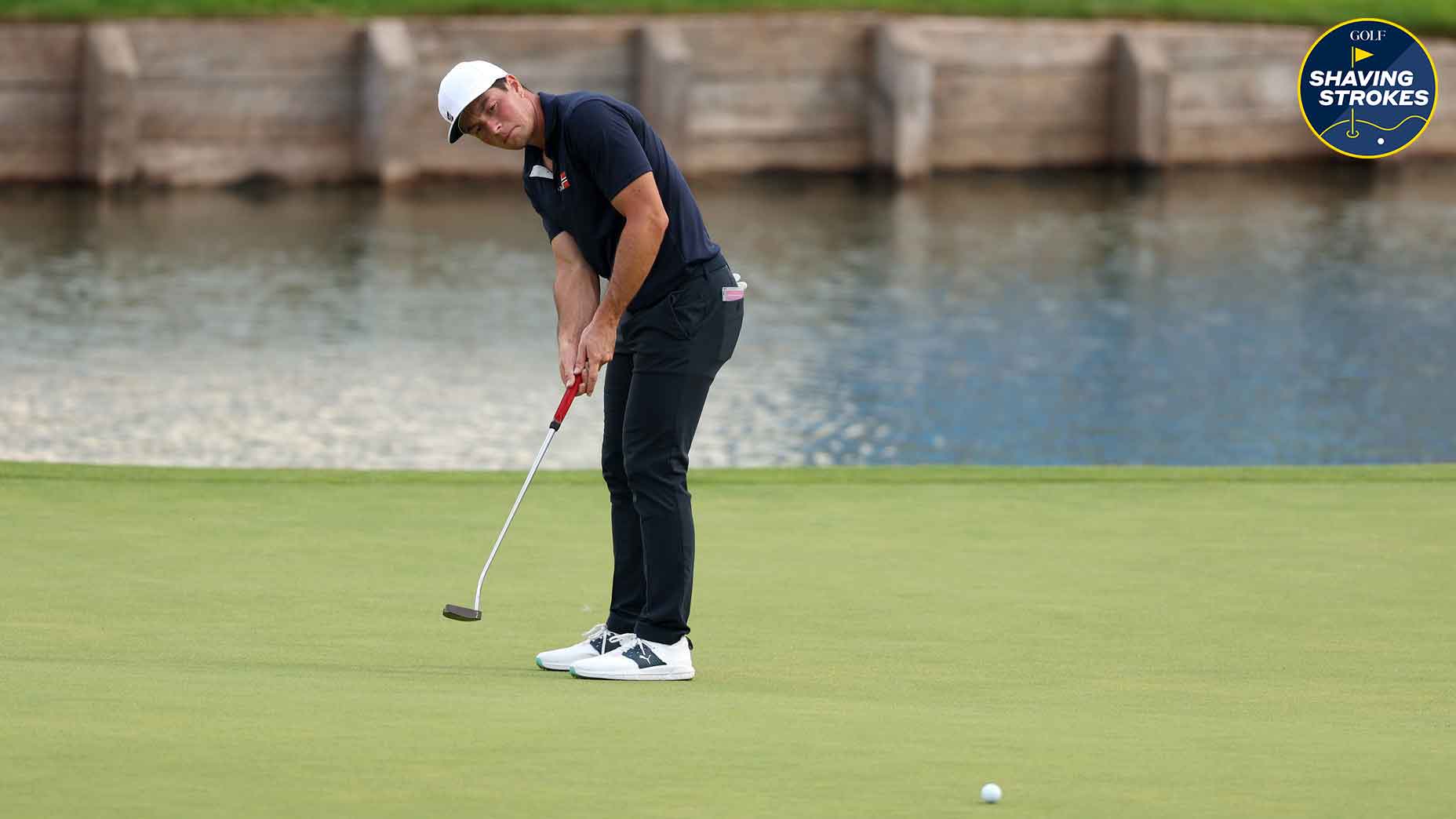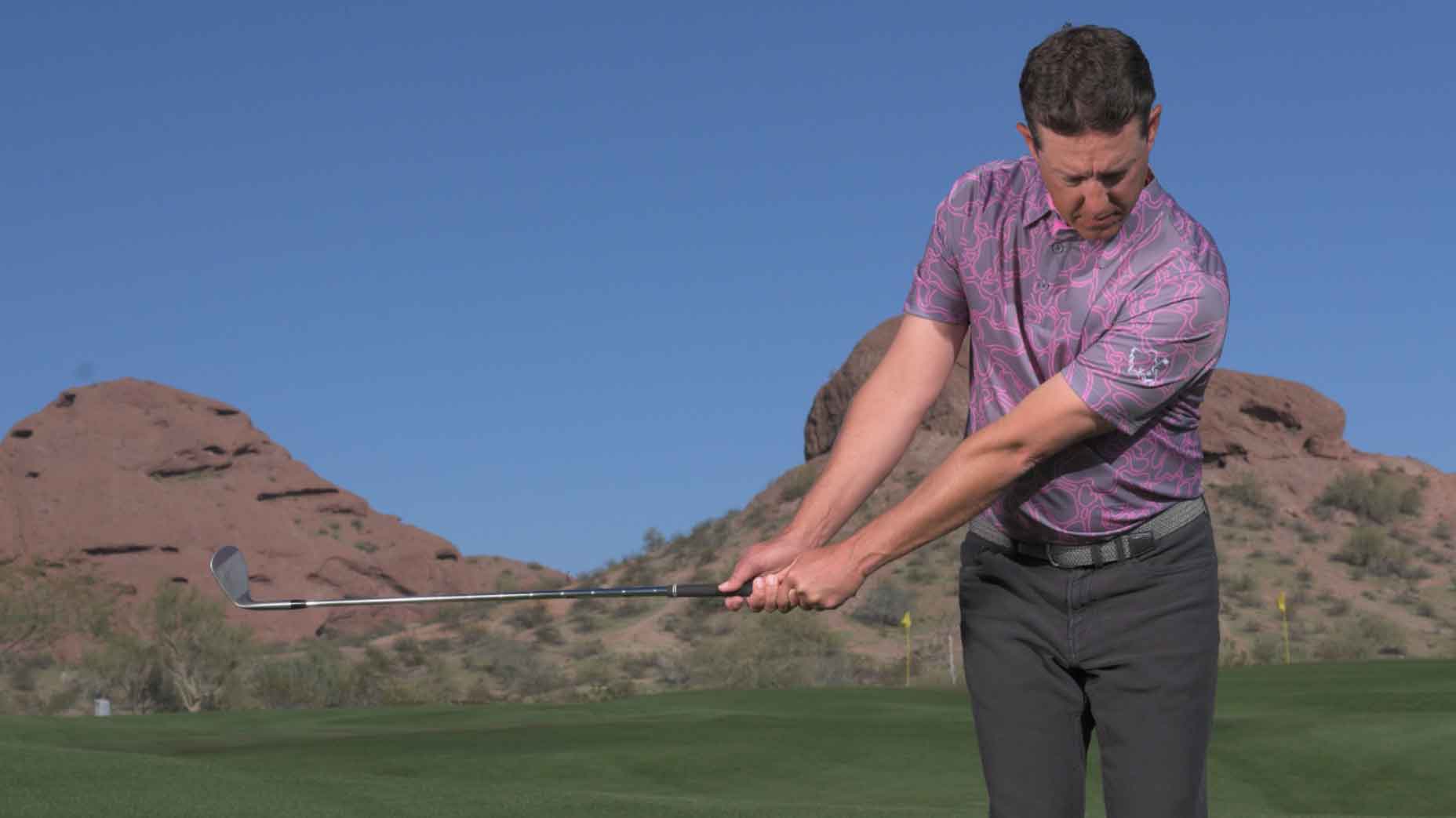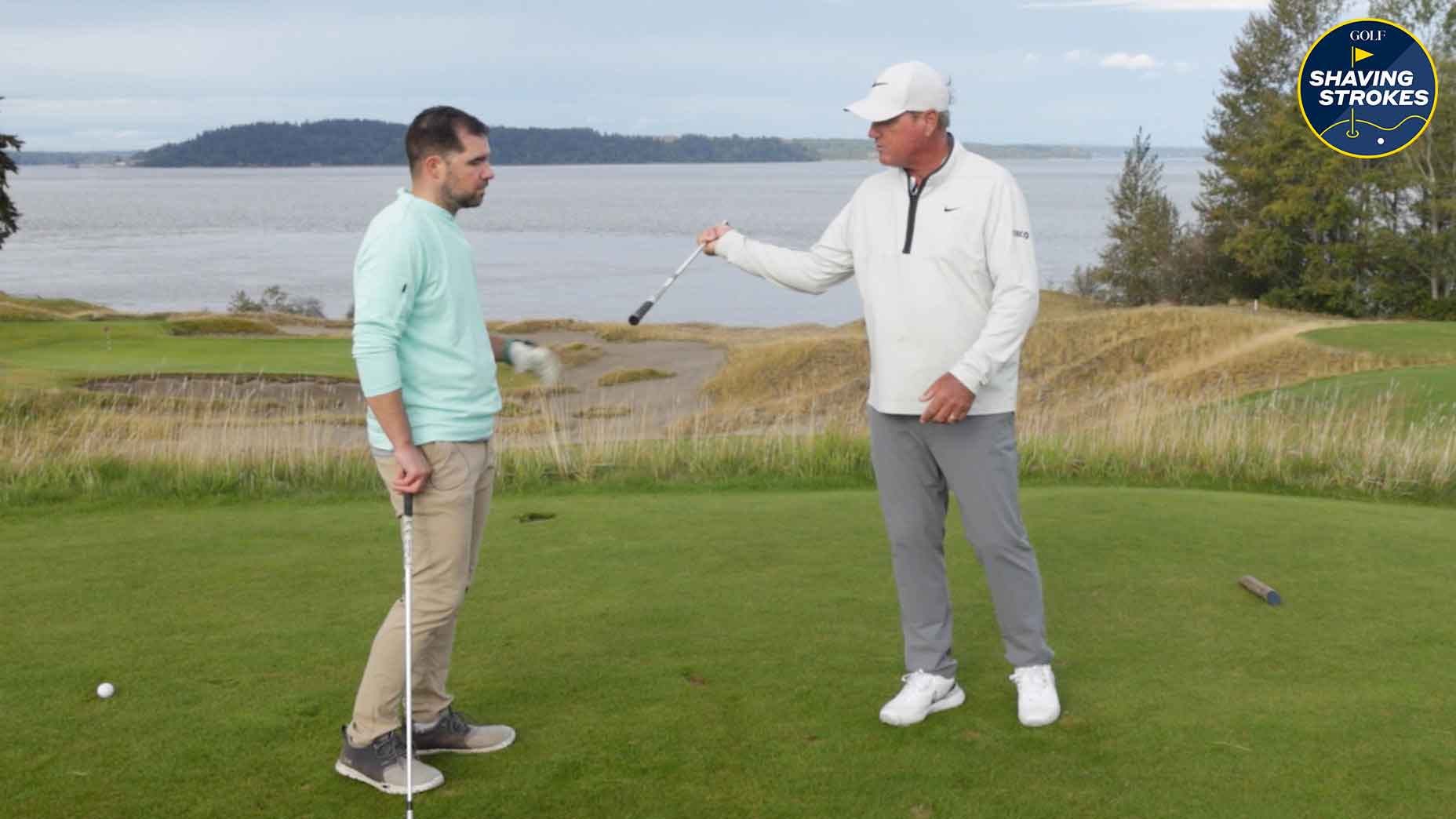10 ways to make better chipping contact and control your distance
- Share on Facebook
- Share on Twitter
- Share by Email

Reboot your chipping fundamentals to start seeing more success around the greens!
Getty Images
Having a solid chipping game isn’t just a great way to quickly lower your scores, but it’s also a good way to take pressure off of your long game and putting. That’s because, even if you mishit your drive or miss a green on an approach shot, being a good chipper can lead you to a closer putt — taking out the difficulty of reading greens and worrying about distance control with the flat stick.
So our goal today? To get everyone reading this to become more comfortable chipping the ball. I provide 10 ways to accomplish that below.
Want to improve your chipping? Follow these tips
Remember, a chip is a short game stroke that produces a ball that rolls more than it carries. The motion can look very similar to a putt, but with a different setup, so there are certain keys to make both consistent contact and dial in your distance control.
For solid contact, do the following.
1. Good posture
The same posture that helps create good contact with your full swing should be the same in your short game; this includes chipping. So bow forward from the hips and allow your arms to hang. This will help the setup be balanced and create a path underneath the shoulder line, which will lead to solid contact through this natural path.
2. When you grip down, step in, don’t bend over more
When chipping, you typically want to grip down on the handle lower — but always remember to stay in correct posture. This means avoiding the bad habit of bending over too much. So when you grip down, simply step in so that your arms can still hang with your hands directly below the shoulders.
3. Ball position is important
The ball position while chipping should be center stance to very slightly back. If it’s too far forward, it can increase the loft — which doesn’t make sense for the type of shot you’re looking to produce, which is one that rolls more after hitting the ground.
I tend to chip with the ball position more in my center. When the ball position is too far back, it can lead to too much shaft lean and a club that digs into the ground.
4. Routine, routine, routine
Everyone should have a pre-shot routine in the full swing, so that shouldn’t change when you’re chipping.
First, set the club behind the ball, which is also when you want to aim the face. Next, place your hands lower down on the grip of the club, which helps with accuracy. This also starts the process of having good golf posture, so remember to bow, such that your arms can hang beneath your shoulders.
Now, step your feet to find your proper distance and posture from your club, maintaining athletic balance. Finally, lean both your body and the club equally towards the target, making sure your sternum and head are slightly on the target side of the ball.
5. Lean equally, but not excessively
When you lean towards the target, remember that you want to lean both your body and the club equally forward, allowing your sternum and head to be slightly on the target side of the ball. This is to help the club hit the ground and brush the grass after the ball — which is perfect for even the tightest of lies.
How to control distance while chipping
Once you feel confident with your technique and contact, you want to work on controlling distance on your chips — which can lead to shots closer to the pin. I suggest doing the following.
6. Define your most comfortable stroke size
As I mentioned earlier, a chipping stroke is smaller, but there isn’t a one-size-fits-all for every golfer — so define what’s most comfortable for you. Some may be smaller, and some may be a bit larger.
As a general rule, you don’t want your backstroke to be larger than hip level. If it becomes too big, you risk hitting a shot that’s too hard, which can then roll off the green.
Once you define your most comfortable stroke size, make an effort to repeat it as often as possible to create consistency with each chip.
7. Brushing the grass consistently
Learning to brush the grass consistently is a tricky part of chipping that many amateurs often struggle with — but is critical in producing a good result.
I always suggest taking three practice swings that brush the grass both back and through.
8. Change the club to control distance
The most efficient and most low maintenance way to control distance is to learn one basic stroke size and then change the club. Once you define your most comfortable stroke size, repeat it with all of your wedges. You can build your own yardage chart for chipping by learning one stroke and hitting different clubs — then writing down the results for each (which includes a note about how far the ball travels, including roll).
9. Use an equal stroke and hold your finish
I briefly mentioned stroke size earlier, so it’s important to remember to keep it relatively equal both back and through. Not only will this help with your contact, but when you use the same speed, you protect yourself from decelerating the club — which can cause it to dig into the ground.
You’ll also typically see good chippers hold their finish. This is a great opportunity to check your balance and to make sure the stroke was equal all the way through.
10. Understand your landing area
To become a good at chipping the ball, you need to understand where your landing area is in order to get the proper roll — which can be different when using a variety of clubs.
If I could choose just one club to use while chipping, it would be a pitching wedge, knowing that it will carry about one-third of the way before rolling the other two-thirds. A basic chart for other club options would be the following:
Sand wedge: one-half carry, one-half roll.
Gap wedge: two-fifths carry, three-fifths roll.
Pitching wedge: one-third carry, two-thirds roll.
9-iron: one-quarter carry, three-quarter roll.
By understanding these fractions, you can then determine what landing spot works best for the shot in front of you — and then go out and chip it close enough to tap in your putt.

Divot Board
$99.99
View Product
Latest In Instruction

Golf.com








